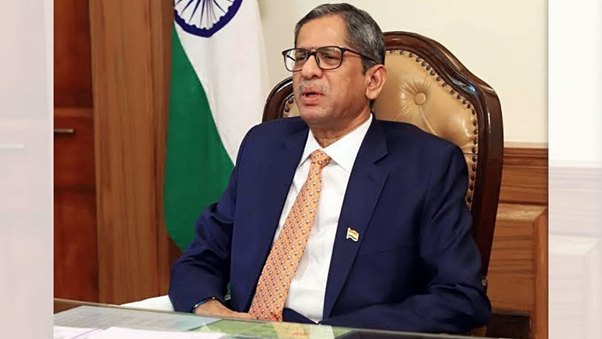Justice DY Chandrachud nominated as next CJI
- Posted By
10Pointer
- Categories
Polity & Governance
- Published
13th Oct, 2022
-
Context
Chief Justice of India U.U. Lalit nominated Justice D.Y. Chandrachud as his successor.
- He will be the 50th CJI.

How is CJI selected?
- The CJI is the chief judge of the Supreme Court of India as well as the highest-ranking officer of the Indian federal judiciary.
- The Constitution of India grants power to the President to nominate, and with the advice and consent of the Parliament, appoint a chief justice, who serves until they reach the age of 65 or until removed by impeachment.
- The ‘Memorandum of Procedure of Appointment of Supreme Court Judges’ says “appointment to the office of the CJI should be of the senior most Judge of the SC considered fit to hold the office”.
- Justice U.U. Lalit is the senior-most judge in the Supreme Court now.
- The process begins with the Union Law Minister seeking the recommendation of the outgoing CJI about the next appointment.
Making final appointment
- The Memorandum says:
- Receipt of the recommendation of the CJI.
- The Union Minister of Law, Justice and Company Affairs will put up the recommendation to the PM.
- The PM will advise the President on the matter of appointment.
- The President of India appoints the CJI.
Qualifications
- The Indian Constitution says in Article 124 (3) that in order to be appointed as a judge in the Supreme Court of India, the person has to fit in the following criteria:
- He/She is a citizen of India
- has been for at least five years a Judge of a High Court or of two or more such Courts in succession
- has been for at least ten years an advocate of a High Court or of two or more such Courts in succession
- is, in the opinion of the President, a distinguished jurist
Removal
- Article 124(4) of the Constitution lays down the procedure for removal of a judge of the Supreme Court which is applicable to chief justices as well.
- Once appointed, the chief justice remains in the office until the age of 65 years.
- He can be removed only through a process of removal by Parliament as follows:
- He/she can be removed by an order of the President passed after an address by each House of Parliament supported by a majority of the total membership of that House and by a majority of not less than two-thirds of the members of that House present.
- The voting has been presented to the President in the same session for such removal on the ground of proven misbehavior or incapacity.
